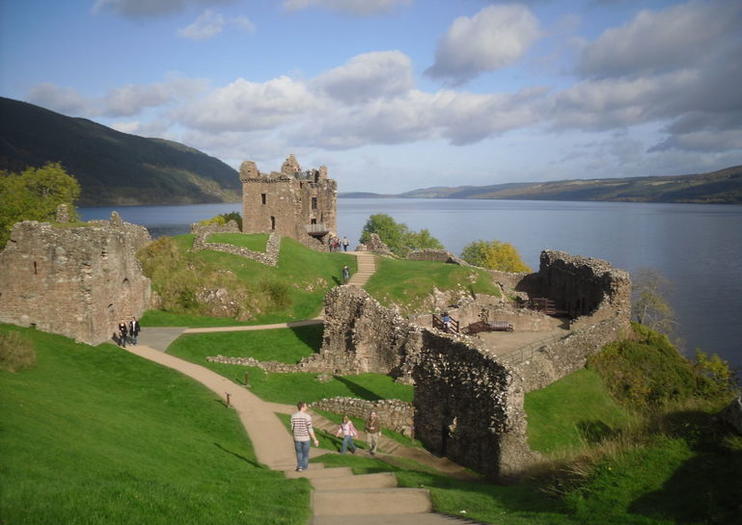


1. Loch Ness contains more water than all the lakes of England and Wales combined – but it’s not Scotland’s biggest Loch or deepest Loch.
2. It’s only 6°C “warm” all year round – so if you’re a fan of open water swimming, you might want to look elsewhere for a dip! This also means though, that even in winter Loch Ness never freezes over and on very cold winter days you can see steam rising from the surface of the Loch, as it is warmer than the
surrounding air!
surrounding air!
3. Loch Ness is part of the Caledonian Canal, which was built in the 19th century to allow ships to make their way from the North Sea to the Atlantic without having to face the dangers of the Pentland Firth.
4. The waters of Loch Ness are very dark due to the peat washed from the hills into the Loch. Perfect cover for any creatures that might be living in the depths!
 5. Loch Ness only has one island, the tiny “Cherry Island” near Fort Augustus – it’s an artificial island called a “crannog”, which was built during the Iron Age.
5. Loch Ness only has one island, the tiny “Cherry Island” near Fort Augustus – it’s an artificial island called a “crannog”, which was built during the Iron Age.
6. Loch Ness was once watched over by Scotland’s smallest manned lighthouse – Bona Lighthouse. The lighthouse keeper used to put a lantern in his window to guide ships from Loch Ness into Loch Dochfour. Today Bona Lighthouse has been restored and is available as a holiday home.
7. Before we had modern roads along the shores of Loch Ness, people travelled over the Loch by Paddle Steamer. A boat trip is still the best way to experience Loch Ness, you can either choose a leisurely cruise or a thrill-seeking trip on a RIB!
8. Did you know the first ever Nessie sighting was way back in 565AD by St Columba? According to legend, a “water beast” attacked the Irish monk’s servant. However, this is said to have happened on the River Ness rather than the Loch itself.
9. One of our favourite facts about Loch Ness, is that you can use Google Maps to look for Nessie under the surface of the Loch! Give it a try!
10. Loch Ness lies in the Great Glen faultline and scientists have detected seismic activity. Although earthquakes in the area tend to be minor.


No comments:
Post a Comment